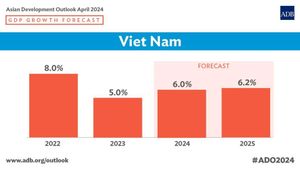Google Maps is making headlines again as it rolls back recent UI changes on Android Auto, following significant backlash from its user base. This change is notable for those using the app for navigation within vehicles, particularly after the adjustments made at the end of January 2025 were met with widespread criticism.
Initially, Google had centered the user’s location on the display, which was only meant to activate when turn-by-turn navigation was not engaged. This seemingly minor tweak had major ramifications for drivers relying on Google Maps, obscuring important route information and reducing overall usability on smaller vehicle screens. Reported frustrations included the destination box blocking the driver’s view, leading to conversations about the practicality of Google’s interface design.
According to 9to5Google, the recent update to the Maps app now remedies this issue. It centers the map according to the UI instead of focusing solely on the vehicle’s display, allowing the destination box to no longer obstruct drivers' views when navigation is off. “Google has rolled out an update to the Maps app to fix a UI issue on Android Auto,” they reported, affirming users have begun to notice the improvement.
These kinds of changes can feel like small details; yet, for drivers trying to navigate the myriad options on their dashboards, even the tiniest of adjustments can lead to frustration. The chorus of complaints from users ranged from mild irritation to outright exasperation as many took to forums such as r/AndroidAuto to air their grievances. With the rising popularity of Android Auto, Google’s decision to implement such changes without user input left many feeling overlooked.
A week after the initial controversy, it appears Google quickly acknowledged the user feedback and took steps to resolve the concerns. 9to5Google confirmed the alterations were already pushing out, as many users reported seeing the previous layout return, which positioned the vehicle icon to one side of the screen and provided clear visibility of the nearest streets.
While this rollback indicates Google’s responsiveness, it also highlights broader concerns about the layout of Google Maps within Android Auto. The previous implementation showcased the limitations of smaller screens, where many menu items take up excessive space and can overwhelm the design. Various users suggested important changes for the future, such as introducing customization options for screen layouts or the ability to hide certain menus, enabling each driver to tailor the interface to their needs.
Commenting on this, tech reporter Will Sattelberg remarked, "Google could, theoretically, hide it all behind a single 'show controls' button," underlining user desires for enhanced functionality without clutter. The pull between functionality and user-friendly design is ever-present, especially for apps used by daily commuters.
Overall, Google Maps' debacle with the UI update serves as yet another reminder of the importance of user feedback. With millions relying on Google for navigation, it is evident how swiftly user opinions can steer company decisions. The possibility for future enhancements remains open, and with suggestions for greater transparency in menu displays or the ability to streamline controls, there is room for growth.
The tech giant’s adaptability and commitment to user needs will likely influence how they approach upcoming updates. For drivers using Android Auto, getting Google’s attention means they’re also shaping the future of navigation technology. This incident reveals both challenges and opportunities as Google navigates the road ahead with Android Auto.



